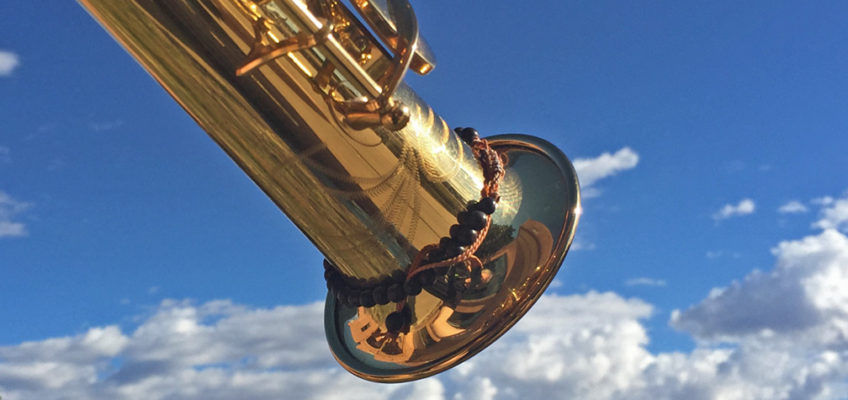I’d thought and read and watched videos about buying a new soprano saxophone. Now it was time to get some hands-on experience. So I made a trip to one of the few music shops in the US that carried in stock some version of all three of my choices. Of course I took my mouthpiece and reeds with me. I deliberated about taking my P. Mauriat sax as well, so I could compare right there, but in the end decided to travel light. If I were to do it over, I would take my own sax along.
I had the opportunity to play:
- A Yanagisawa SWO10 (comes with both straight and curved necks)
- A Yamaha Custom Z (curved neck)
- A Yamaha Custom EX (comes with both straight and curved necks)
- A Selmer Series III
All were in the traditional brass material with gold lacquer. Here are my own observations: (Your mileage may vary.)
My Impressions
All three manufacturers offered key feel that was noticeably smoother and more refined than the P. Mauriat. My P. Mauriat horn had a decidedly clunkier and less “buttoned down” action, versus the buttery smooth feel of these other horns. These horns were also ergonomically superior – the keywork fit my hands more comfortably.
After trying it out, I found the curved neck option was not something that I felt offered me more comfort. That meant I could focus on one-piece straight neck horns.
All three of the makers I tried were less free blowing, and had a smaller over all sound than my P. Mauriat. After getting my new horn (I’ll tell you soon) and comparing it to my old horn, I realized the the P. Mauriat soprano does have a big, bold, kind of garrulous sound compared to the others. It would be great for playing funk in a rowdy situation, and it offered me a wide range of easily accessible expression. I always enjoyed playing it, but the new horns I tried out offered more warmth and refinement in their sound.
I found the Selmer soprano to have a restrictive sound with very little dynamic range. It felt like I couldn’t blow much past a certain point, and the volume was limited to that point. Perhaps this is due to a smaller bore size. To me, this was unsatisfying, especially coming from the big sound of the P. Mauriat, so I eliminated it as a choice. (Also, new Selmers are SO expensive!)
I did some pitch testing with my tuner, and found all of the horns to be generally buttoned down on tuning. The exception was the Yamaha EX, which had a noticeable problem in the mid-lower range. A few of the notes there were definitely off. Could have just been the demo model I played, but since I’d already worked out that I didn’t need two necks, I crossed that one off my list.
Buying A New Soprano – Narrowing It Down
That left me with the Yanagisawa SWO, and the Yamaha EX. I felt that these two horns had fairly similar sound and feel. But for me, the Yanagisawa had more to offer tone wise, and also felt ergonomically a bit more comfortable. Bingo.
I went home knowing that I would be buying a Yanagisawa SWO1 soprano saxophone – the one-piece version that has a straight neck. The shop I visited didn’t have one in stock, and in any case I knew I wanted to shop around for price.
A few weeks later I had one of my own – the same horn that had originally captivated me in those Sax.co Youtube videos. All the things I felt drawn to about it were there – that warm, refined sound, and that buttery smooth Yanagisawa key action. I’m done buying a new soprano saxophone. That’s my horn.


